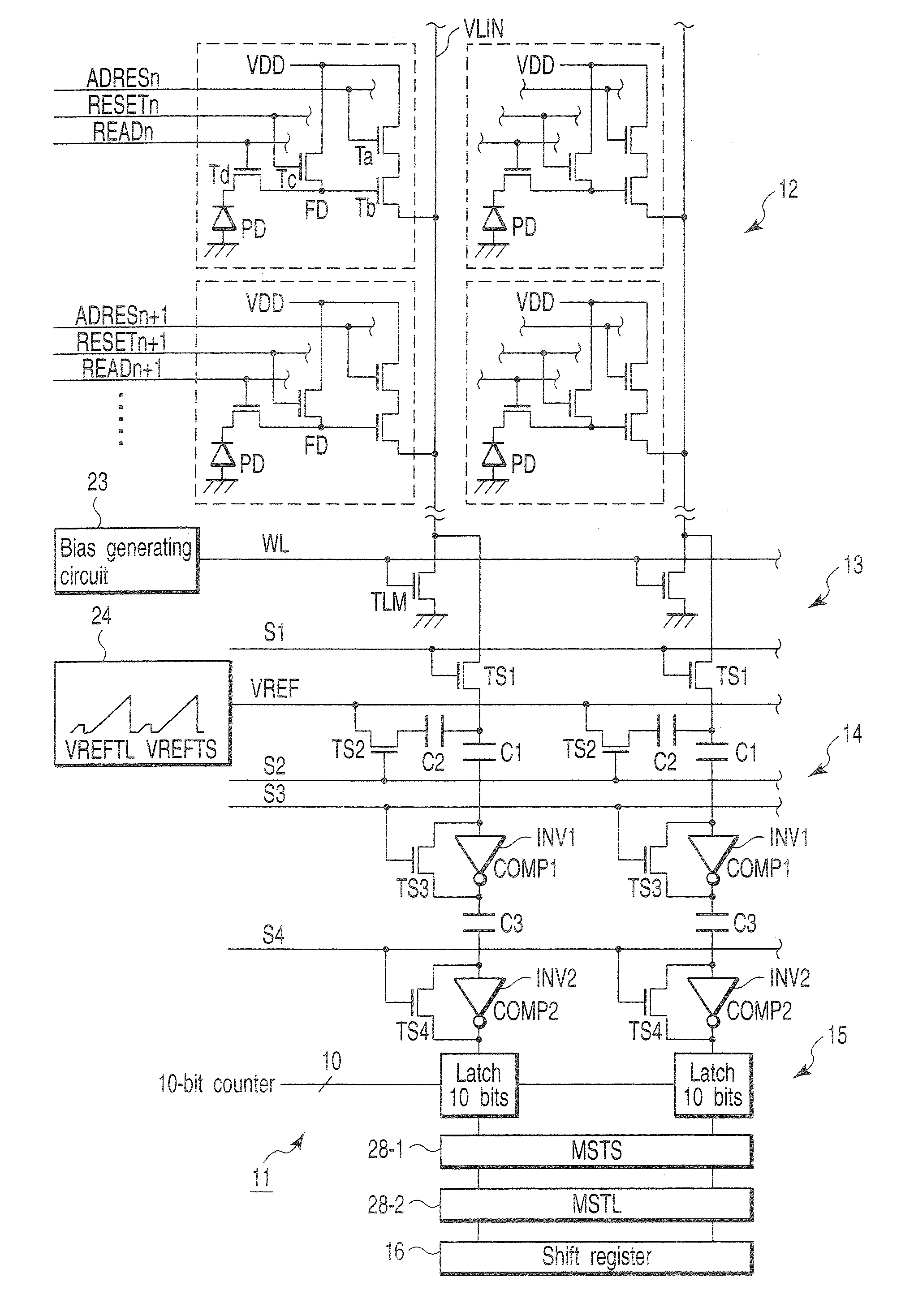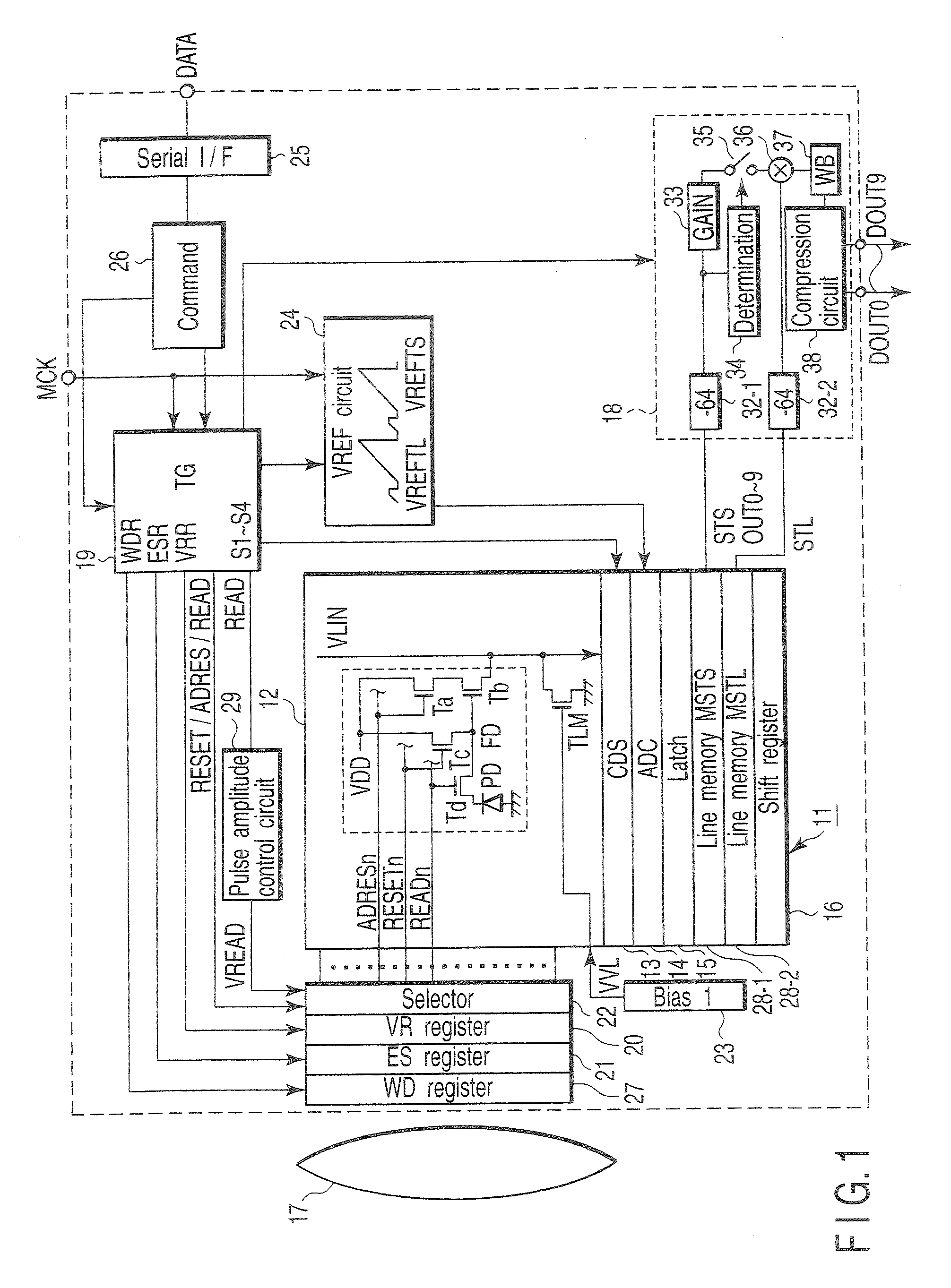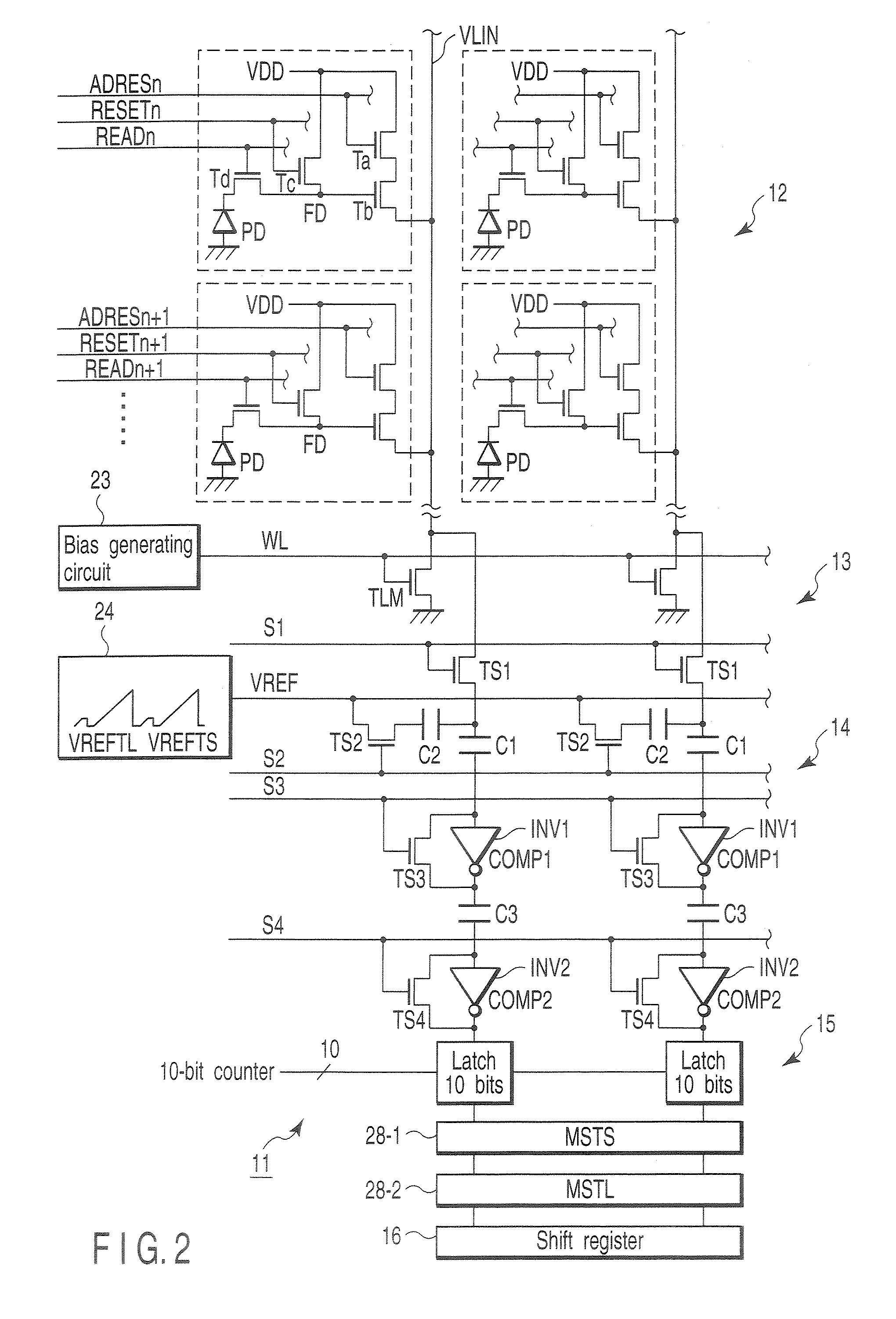Amplification-type CMOS image sensor of wide dynamic range
a cmos image sensor and wide dynamic range technology, applied in the field of solid-state image sensing devices, can solve the problems of reducing image quality, affecting image quality, and affecting image quality,
- Summary
- Abstract
- Description
- Claims
- Application Information
AI Technical Summary
Benefits of technology
Problems solved by technology
Method used
Image
Examples
first embodiment
[0021]FIG. 1 is a block diagram showing the schematic configuration of an amplification-type CMOS image sensor, for illustrating a solid-state image sensing device according to a first embodiment of this invention. In a sensor core section 11, a pixel section 12, column type noise canceling circuit (CDS) 13, column type analog-digital converter (ADC) 14, latch circuit 15, two line memories (MSTS, MSTL) 28-1, 28-2, horizontal register 16 and the like are arranged.
[0022] Light is incident on the pixel section 12 via a lens 17 and charges corresponding to an incident light amount are generated by photoelectrical conversion. In the pixel section 12, cells (pixels) are arranged in a two-dimensional form of rows and columns on a semiconductor substrate. Each cell is configured by four transistors (Ta, Tb, Tc, Td) and a photodiode (PD) and pulse signals ADRESn, RESETn and READn are supplied to each cell. In the lower portion of the pixel section 12, load transistors TLM of a source follow...
second embodiment
[0042]FIG. 4 shows the photoelectric conversion characteristic of the CMOS image sensor shown in FIGS. 1 and 2. A signal STL is saturated at an SVm level. If the signal STL is saturated, a signal STS is output. When the level of the signal STS is increased, a Knee point is generated and the inclination thereof is suppressed by the accumulation time ratio TS / TL. Therefore, if the signal processing operation is performed by use of a WDM circuit 18 with the configuration as shown in FIG. 1, a small-signal portion of the signal STS is greatly amplified and added and, as a result, the level of an added output signal SF is lifted in a range higher than SVm. The inclination of a portion after the Knee point is set to the same as that of the signal STL, but the signal is lifted by an amount corresponding to the offset. However, when the accumulation time ratio TS / TL is sufficiently low, the Knee point is set at substantially the same level as ΦVm, and therefore, the signal can be practicall...
third embodiment
[0052] In the second embodiment, the photodiode PD section performs an incomplete transfer operation in a portion near the Knee point of the signal STS as more precisely shown in FIG. 7. Therefore, a state in which a residual image occurs and the signal becomes difficult to be read is set and the characteristic is smoothly curved. When signal charges of an amount sufficiently larger than that of the Knee point are present in the photodiode PD section, the signal charges themselves act as bias charges to suppress occurrence of the residual image, and therefore, no residual image occurs and the characteristic linearly varies. If the Knee point having the smooth characteristic curve is subjected to the WDM process, the linearity of the synthesized signal SF is deteriorated in a portion near the Knee point. In the experiment, a deterioration of 5% at maximum occurs with respect to the ideal characteristic.
[0053]FIG. 8 is a block diagram showing the schematic configuration of an amplifi...
PUM
 Login to View More
Login to View More Abstract
Description
Claims
Application Information
 Login to View More
Login to View More - R&D
- Intellectual Property
- Life Sciences
- Materials
- Tech Scout
- Unparalleled Data Quality
- Higher Quality Content
- 60% Fewer Hallucinations
Browse by: Latest US Patents, China's latest patents, Technical Efficacy Thesaurus, Application Domain, Technology Topic, Popular Technical Reports.
© 2025 PatSnap. All rights reserved.Legal|Privacy policy|Modern Slavery Act Transparency Statement|Sitemap|About US| Contact US: help@patsnap.com



